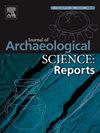The paper presents the results of an interdisciplinary investigation aimed at recognizing the contents of the ovoid amphorae produced between the 5th and the 7th century CE in the territory of Hierapolis of Phrygia (Turkey). The specific content of this amphora class has never been investigated although the large amounts of local or regional amphorae recovered in several areas of the city are good indicators of the relationship between Hierapolis and its territory regarding the exchange of locally/regionally produced goods during the Early Byzantine period. Furthermore, the study of pottery assemblages shows a relatively insignificant amount of imported amphorae in the general framework of exchange of the regional cities of the Lykos Valley, such as Hierapolis. Organic residues analysis were carried out by Gas Chromatography-Mass Spectrometry (GC–MS) on twenty-one amphorae samples from the residential contexts excavated in three different areas of the city. The morphology of the selected vessels is well representative of the local/regional amphora type attested in other Early Byzantine contexts of the city. The results obtained from the analyzed samples indicate that most of the amphorae were coated with pitch from Pinaceae trees and that contained grape derivatives, while some of them contained plant oils. These results, combined with morphological and typological data, together with fabric analyses, provide interesting insights into the production and exchange of goods in Hierapolis as well as into the reconstruction of the local economies of inland regions of Anatolia in the Early Byzantine period.


